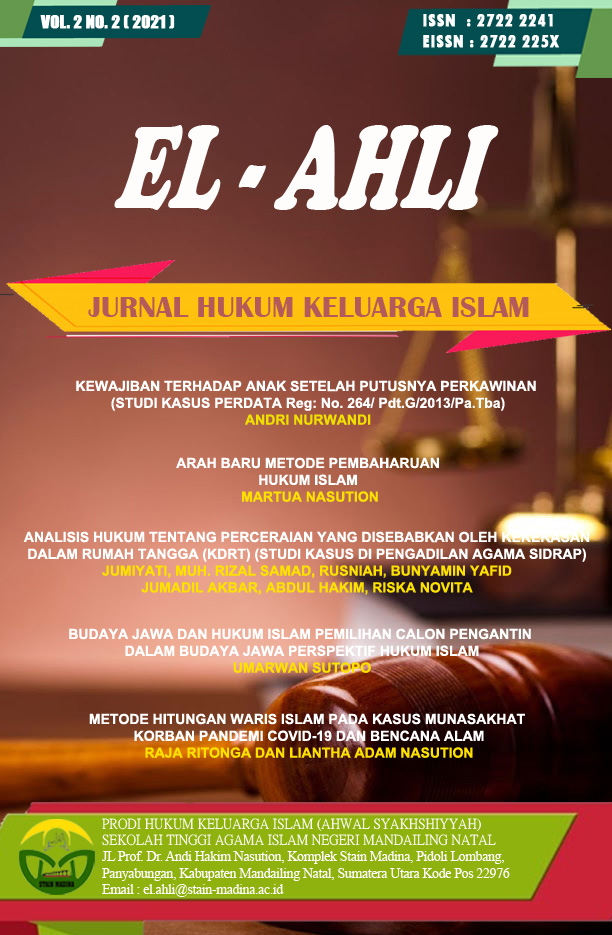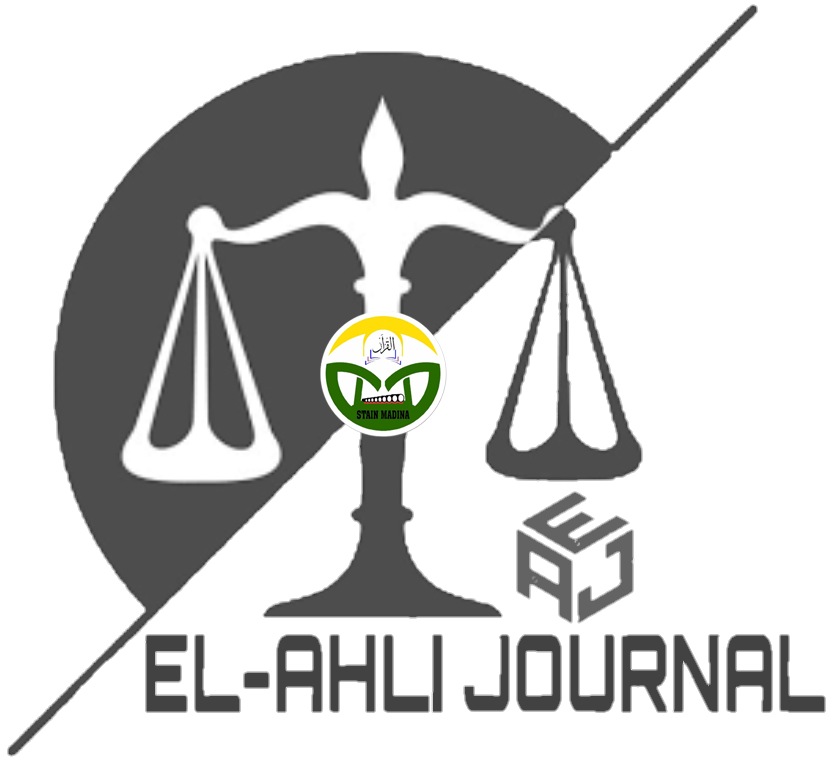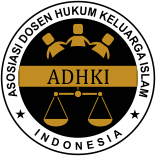ANALISIS HUKUM TENTANG PERCERAIAN YANG DISEBABKAN OLEH KEKERASAN DALAM RUMAH TANGGA (KDRT) (STUDI KASUS DI PENGADILAN AGAMA SIDRAP)
DOI:
https://doi.org/10.56874/el-ahli.v2i2.527Keywords:
perceraian, kekerasan, KDRTAbstract
ABSTRACT
The research aims (1) to find out whether domestic violence can be used as a reason to file for divorce. (2) To find out the legal consequences arising from divorce caused by domestic violence in the Sidrap Religious Court. This study uses qualitative research methods. The data in this study were collected through in-depth interviews, observation, and documentation. The data analysis technique uses a qualitative descriptive technique, namely Inductive, starting from specific matters or events and then generalizing to obtain general and deductive conclusions (laws), the opposite of deductive, which is starting from general things or events to give birth to a conclusion. . The results of this study indicate that (1) the factors causing the occurrence of criminal acts of domestic violence include jealousy, economic factors, and lack of knowledge about the UU KDRT. (1) legal protection for women victims of criminal acts of domestic violence has been regulated in UU No. 23 of 2004 concerning the Elimination of Domestic Violence.
ABSTRAK
Penelitian bertujuan (1) Untuk mengetahui apakah kekerasan dalam rumah tangga dapat dijadikan alasan untuk mengajukan perceraian. (2) Untuk mengetahui akibat hukum yang timbul dari perceraian yang disebabkan tindak kekerasan dalam rumah tangga di Pengadilan Agama Sidrap. Penelitian ini menggunakan metode penelitia kualitatif. Data pada penelitian ini dikumpulkan melalui wawancara mendalam, observasi, dokumentasi. Teknik analisis data menggunakan teknik deskriptif kualitatif yaitu Induktif, bertolak dari perihal atau peristiwa- peristiwa yang khusus kemudian digeneralkan untuk mendapatkan kesimpulan (hukum) yang umum dan deduktif, kebalikan dari deduktif, yaitu bertolak dari hal – hal atau peristiwa yang umum untuk melahirkan sebuah kesimpulan. Hasil penelitian ini menunjukkan bahwa (1) faktor-faktor penyebab terjadinya tindak pidana kekerasan dalam rumah tangga antara lain faktor kecemburuan, faktor ekonomi, dan faktor kurangnya pengetahuan tentang UU KDRT. (1) perlindungan hukum bagi perempuan korban tindak pidana kekerasan dalam rumah tangga telah diatur di dalam UU No. 23 tahun 2004 tentang Penghapusan Kekerasan Dalam Rumah Tangga.
References
Elli N. Nasbianto.1999. Kekerasan dalam rumah tangga ; Sebuah Kejahatan yang tersembunyi, dalam syafik hasyim, Menakar harga perempuan, (Bandung: Mizan)
Fatihuddin Abdul Yasin. 2006. Risalah Hukum Nikah, (Surabaya: Terbit Terang)
Happy Susanto. 2008. Pembagian harta gono gini saat terjadi Perceraian, (Jakarta: Visimedia)
Ismail Hasani (ed.). 2008. Referensi bagi Hakim Peradilan Agama tentang Kekerasan dalam Rumah Tangga, (Jakarta: Komnas Perempuan)
Kompilasi Hukum Islam (KHI) Inpres Nomor 1 Tahun 1974
M. Idris Ramulyo.1985. Beberapa masalah tentang Hukum Acara Perdata Peradilan Agama dan Hukum perkawinan, (Jakarta: Cetakan Pertama INDHILL,CO)
Satria Effendi M. Zein. 2004. Problematika Hukum Keluarga Islam Kontemporer, (Jakarta: Kencana)
Sudarsono. 1991. Lampiran UUP Dengan Penjelasannya, (Jakarta: Rineka Cipta)
Zainuddin Ali. 2006Hukum Perdata Islam di Indonesia, (Jakarta: Sinar Grafika)
Downloads
Published
How to Cite
Issue
Section
License
All articles published in EL-AHLI: Jurnal Hukum Keluarga Islam are licensed under a Creative Commons Attribution-ShareAlike 4.0 International License (CC BY-SA 4.0).
Under this license, authors and readers are free to:
-
Share — copy and redistribute the material in any medium or format.
-
Adapt — remix, transform, and build upon the material for any purpose, even commercially.
Under the following terms:
-
Attribution — You must give appropriate credit, provide a link to the license, and indicate if changes were made. You may do so in any reasonable manner but not in any way that suggests the licensor endorses you or your use.
-
ShareAlike — If you remix, transform, or build upon the material, you must distribute your contributions under the same license as the original.
Copyright and Licensing Policy:
-
The author retains copyright and grants the journal the right of first publication with the work simultaneously licensed under the Creative Commons Attribution-ShareAlike 4.0 International License, which allows others to share the work with acknowledgment of the work’s authorship and initial publication in this journal.
-
Authors are allowed to enter into separate, additional contractual arrangements for the non-exclusive distribution of the journal's published version of the work (e.g., post it to an institutional repository or publish it in a book), with an acknowledgment of its initial publication in this journal.
Link to License:
https://creativecommons.org/licenses/by-sa/4.0/





